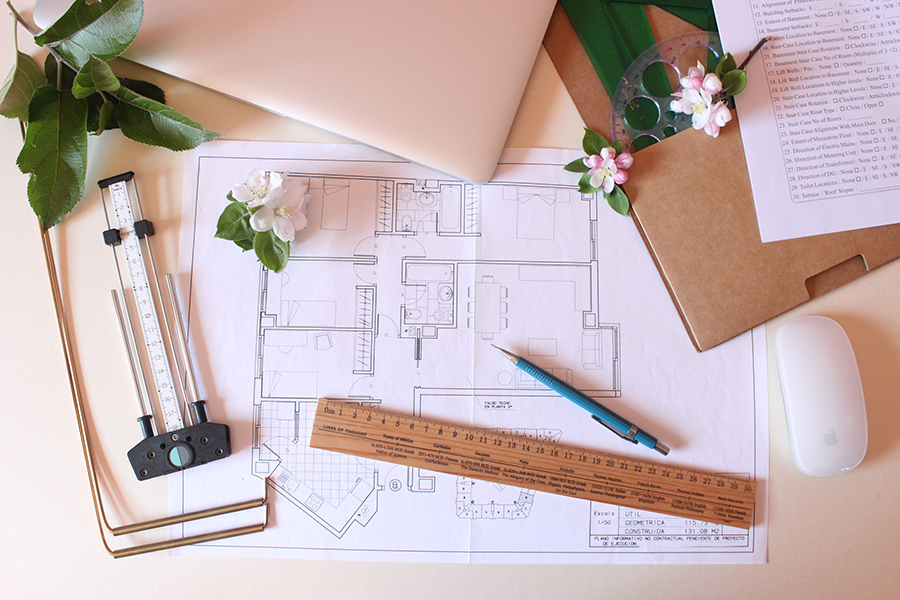Vastu Shastra principles: 7 things you should know about it
The more I see a growing interest in Vastu in the West, the more I see a limited understanding of it. It’s normal because is foreign to our culture!
The internet is full of superficial information about the subject so that’s why I wanted to share with you seven key Vastu Shastra principles.
In this post, I am sharing with you some core values behind it that should be taken into consideration, especially if you’re interested to study Vastu or apply it in your home. They are as follows:
1.Vastu Shastra is sustained by Vedic philosophy
It’s not possible to understand Vastu without the core wisdom of the Vedas that supports it along with other disciplines, such as Yoga or Ayurveda.
Within the vast Vedic wisdom, there are four essential theories that I see as the 4 pillars of Vastu. They are as follows:
- The law of nature: The law of nature in the Vedas sees order and harmony in the entire Creation. Everything has its appropriate proportion and rhythm, giving beauty to it. An example of this is the principle of symmetry in a building that Vastu promotes, because our own body is also symmetrical.
- Everything that exists is animated: Vedic texts state that everything that exists is living, pulsates and vibrates. This principle is also embraced in quantum physics. Within Vedic philosophy, there are two Sanskrit terms that gives a specific form to invisible energy: prakriti and purusha.
- We are all interconnected: Nothing exists in isolation. This is a holistic theory that holds the essence of all matter is connected to the Supreme Creative Force. So, in Vastu it’s important to respect this principle to build in harmony and create spaces that enhances health and well-being.
- The essence of everything is part of that: The ultimate goal of Vastu is to create spaces to nurture human soul, helping us to be in alignment with our true essence. This role aims to make us feel part the Supreme Creative Force. Through the practice of all Vedic disciplines, one gets closer to the awakening of their true selves, realising that their internal essence is part of the whole.
2.It combines architecture with spirituality
Most people who have never heard of Vastu before, they wonder if it’s like Feng Shui. It’s a normal mechanism of the mind to compare new things in order to “tag” them for a better understanding. Vastu Shastra is different from Feng Shui, even though they have many things in common!
Their main purpose is to harmonize spaces for well-being, redirecting the flow of energy (prana or chi). However, the main difference between both is that Feng Shui is more an art of placement while Vastu is a sacred science, dealing more with architecture and spirituality. (You can discover more about their similarities and differences in this post)
Originally, Vastu was born to design and construct temples, city planning, palaces, forts and residences for the upper class. It contains texts for site selection, construction, mathematical proportions, sculpture, etc in harmony with the laws of nature.
In the process of design, Vastu follows the Vedic concept of giving a specific form to that invisible energy (prana), combining its material aspect (prakriti) with the invisible one (purusha).
The Sanskrit term Purusha refers to the animating principle that’s present in matter. It represents the invisible spirit, soul or energy that is in motion. Prakriti, provides the material aspect, it’s the body that carries the soul and, in architecture, that’s the material ‘shelter’ for that energy already present.
It’s our human body, form, home or Prakriti what we can see, touch and describe. The soul is the energy, essence or Purusha contained within our human body, form or home. This is a basic relationship between energy and matter supported by modern physics.

3.Vastu Shastra guidelines differ from Northern to Southern Hemisphere
Many Vastu consultants defend that Vastu Shastra principles are universally applicable and that’s true BUT, there are many guidelines that are not applicable in the same way everywhere. That is the case with the North and South hemisphere.
The magnetic field of the earth is not the same in the Northern than the Southern hemisphere, the energy doesn’t flow in the same direction and, the Solar radiation also changes! Therefore, Vastu cannot be applied in the same way! If in Europe you get sunshine almost all day in the Southern part of your home, in Australia you get in the North! Solar energy is very important in Vastu so it should be considered properly.
Furthermore, there are also many exceptions regarding the flow of energy. I’ve seen many cases in Europe where the energy flow as Southern hemisphere because of the topography of the land and the influence of the sea nearby (my home in Spain is an example of this…).
4.It’s a holistic knowledge
When I say holistic, I mean that’s a knowledge that cannot be understood or applied only intellectually, in a rational way. Nor only spiritually! When ‘spiritual tips’ in Vastu lack the common sense and deep understanding behind, it’s when approaches the risk of becoming ‘superstition beliefs’.
The highest way of practicing Vastu is to do it with an architect that can get in tune with that energy that’s already there (Purusha) to give it form (Prakriti) in harmony with the environment. So, intuition plays a big role here.
Vastu is a vast, complex and deep knowledge that can only be fully understood on an integral way using our senses, intuition, feelings and thinking. Otherwise, the approach to it would be very superficial.
5.Vastu should be used for plot selection as well
Nowadays, many websites (and new books!) are full of waffle with interior decor recommendations, superficial magical tips and so on. That’s a kind of… “generic make up”. You have to work with what you have, of course! My approach is to be very practical within my idealism, doing my best with the possibilities at hand but, Vastu should be applied from the very beginning, even to select the plot where you would like to build. The soil, shape, proportions, slope of land surface, directional alignment, etc matters a lot in Vastu.
When I first started to study Vastu, mi teacher shared once with me that a story that reflects very well this point. A partnership group wanted to purchase a piece of land to stablish there a business idea they had. One of the members consulted him about the land and, my teacher, saw that something was wrong with the place. He recommended her to withdraw from that idea of buying it and requested her to research about the land history. This lady took his advice and decided to step out of the business idea she had with her business partners.
However, the others, decided to carry on with the plan of buying it to do set there their company and, not only had to face lots of unexpected problems on the way, but also ended up closing their business with a big debt. Later on, she discovered that the land had had a cemetery in the past!
There are many things that go beyond our logical understanding and control. You can create a fantastic Vastu design for your home but if the purusha of the land is not in alignment with your intentions, you could end up being disappointed with your project.
In the same way you listen to your body while practicing Yoga or Ayurveda, in Vastu you ‘listen’ to the land. It’s all about surrender and try to be aligned with a force that’s higher than us to be in harmony with it, rather to impose our will on it.

6. Geobiology is part of Vastu Shastra
Geobiology explores the interactions between the physical Earth and the biosphere with living beings and Vastu pays special attention to the magnetic grid of the Earth, faults, water springs, Curry lines, etc
It is an essential part in Vastu and a geobiological study should be made to guide the first design of the house. Here, there is a visible and ‘invisible’ examination of the site that give lots of information regarding the lay out of the home. The main purpose is to avoid water spring of water underneath your children sleep, geopatic stress lines crossing where your bed, etc
7. You can apply Vastu Shastra principles to your current home
You might be wondering this: ”I wish I could design a Vastu house from scratch but, that’s not my case at the moment… So, what options do I have for my current home?”
From the most drastic one to the lighter one, you have these 3 options:
1) If you are planning to do renovation works, that’s certainly something you could consider. It’s not easy though to apply Vastu Shastra principles on renovations if you want to apply it on a purist way. However, I know many Vastu consultans work in this way: they would advise you to demolish what they consider an issue.
2) Ask a professional to do Vastu energy corrections to neutralise whatever issue might be detected in the house, harmonise the space and redirect the energy. That’s my approach and it doesn’t required demolitions! If you’re interested in doing so, I recommend you to do it with a Vastu professional that inspire your trust. (Unfortunately, there’re many quacks out there)
3) Harmonize your home space yourself decluttering, cleaning, purifying and blessing your home. That’s not as efficient as the previous option but you can get great results. I teach how to do that in my course How to harmonize your home for spiritual growth.
My recommendation to obtain better results is to combine option 2 & 3, not only to harmonize your home but your inner space as well 🙂
I hope this post has given you a deeper understanding about Vastu Shastra principles! If you are interested in knowing more about this fascinating sacred science, you can take a look at my courses.
And for any other query, you can always leave a comment below or send me an e-mail.
With love & light,
Julia

